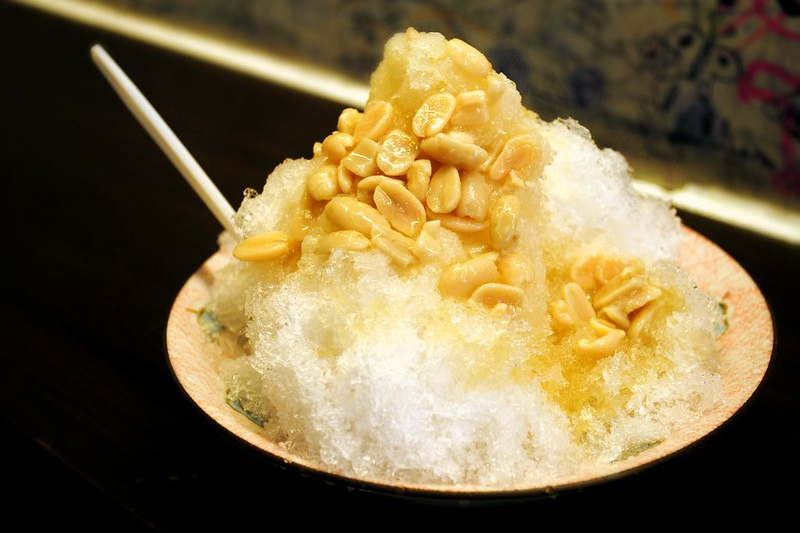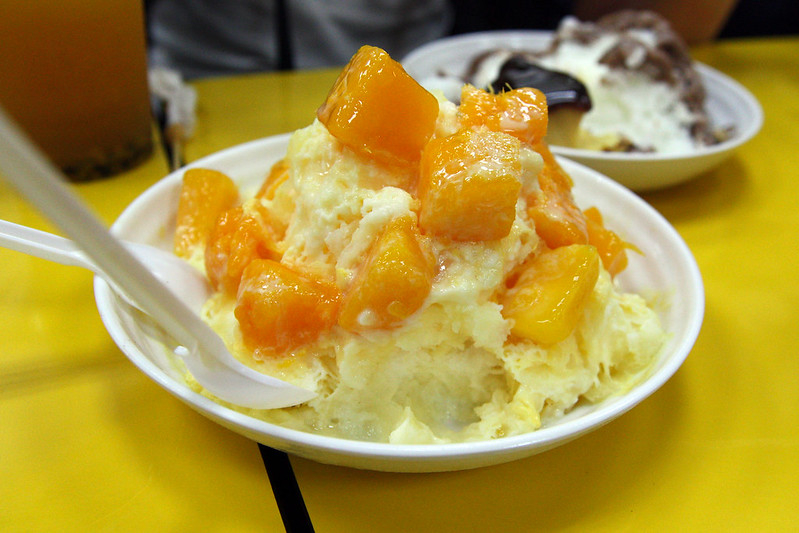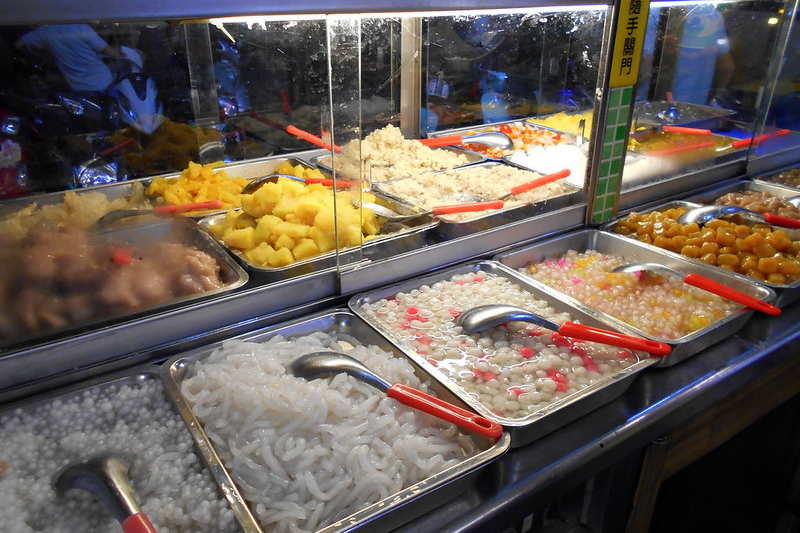
In the humid summers of Taiwan, there’s an icy treat that’s enjoyed by countless people in cafes and vibrant night markets — Taiwanese shaved ice. Called bao bing in Chinese, this refreshing dessert, often in the shape of thinly shaved sheets, has the texture of fluffy snow and is covered with a dizzying array of sweet and fruity toppings.
Related Guides
What Makes Taiwanese Bao Bing Unique?

The origins of Taiwanese bao bing can be traced to China. Since ancient times, the Chinese have been eating shaved ice and this tradition has continued into the modern era. In 1972, when President Nixon made his historic trip to China, he enjoyed shaved ice with Mao Zedong at a state dinner. Bao bing eventually migrated to Taiwan by way of Chinese immigrants. Taiwan is home to various immigrant groups from all over China, each bringing their provincial cuisine to the island.
Although variations of shaved ice exists throughout Asia, Taiwanese bao bing possesses an extra rich and creamy taste. This is due to the addition of condensed milk or cream that’s mixed directly into the ice. Some bao bings will also resemble thin sheets layered on top of each other. All of this results in a fluffy texture that melts like powdered snow on the tongue. Many bao bing places will serve portions that seem quite large at first glance. Remember — bao bing is mostly ice so even these large portions are quite manageable. Also, bao bing are mostly enjoyed as a social food and best when shared.
Diversity of Toppings

One of the best parts about Taiwanese shaved ice is the incredible amount of toppings. Traditionally, bao bings are covered in scoops of sweet azuki beans and drizzles of condensed milk. But that’s only the beginning. Bao bing toppings can include everything from peanuts, mochi pieces, grass jelly, Pocky sticks, and even American cereals like Fruity Pebbles. Many of these toppings feature a prized textural component of Taiwanese cuisine called “Q.” This texture, emphasized in items like tapioca boba, describes something bouncy with a pleasant, resistive chew. This texture is highly prized in many Asian cuisines.
Another set of popular toppings involves fruit. Since Taiwan is a tropical place, the island can grow an incredible variety of fruits. Fresh fruit like mangos, peaches, watermelons, kiwis and strawberries are all sought-after toppings. In Taiwan, the most common fruit bao bing will be chunks of mango with condensed milk.
How to Make Taiwanese Shaved Ice
To make bao bing at home, the process is relatively simple. Keep in mind that without a professional shaved ice machine, it won’t be possible to achieve the powdery, fluffy snow texture of bao bing at home. Instead, your best bet is to use a blender. Simply place ice into a blender and blintz until crushed. Then, add condensed milk on top of the ice and serve immediately.
For toppings, feel free to select any kind of fruits or sweets you like. Just remember to prep everything beforehand since the bao bing should be eaten immediately after the ice has been prepared. For the other toppings, like grass jelly or azuki beans, these can be purchased at most Chinese or Asian markets. If an Asian market isn’t available near you, try ordering these ingredients online from a specialty supplier.
Editors' Recommendations
- How to make a killer meatloaf (and it’s easier than you think)
- How to make the best vodka gimlet for a twist on a classic
- This is how to make the perfect dirty martini
- The grasshopper drink is a retro blast from the past — this is how to make it
- How to make a buttery hollandaise sauce like a professional chef




